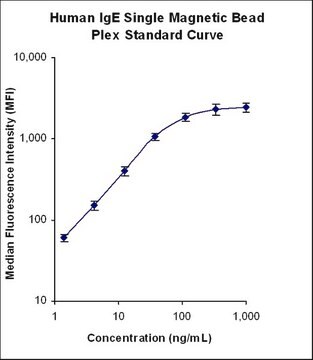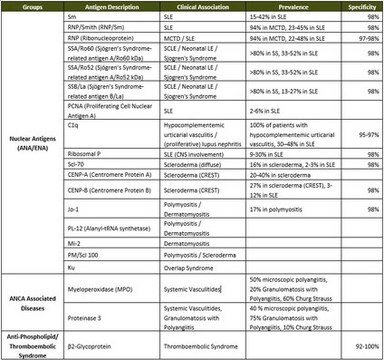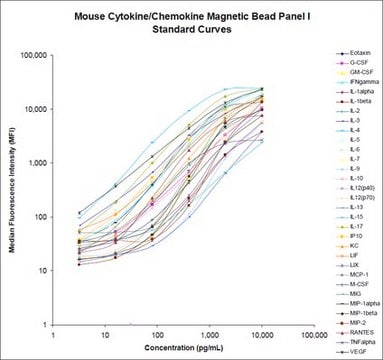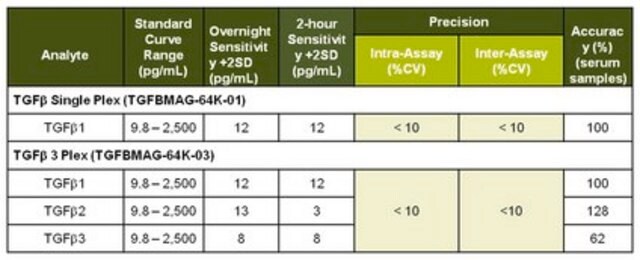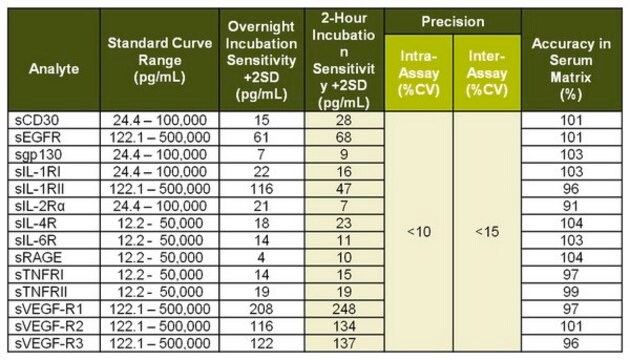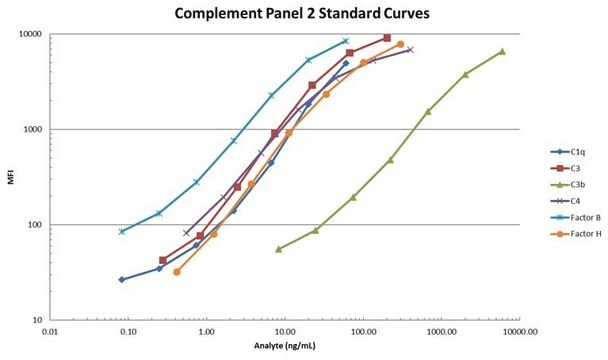HGAMMAG-301K
MILLIPLEX® Human Isotyping Magnetic Bead Panel - Isotyping Multiplex Assay
Isotyping Bead-Based Multiplex Assays using the Luminex technology enables the simultaneous analysis of multiple immunoglobulins (Ig) in human serum, plasma and cell culture samples.
Synonym(s):
Human Ig isotype multiplex panel, Human immune globulin multiplex panel, Human immunoglobulin multiplex kit, Luminex® human immunoglobulin immunoassay, Millipore Human immunoglobulin panel
About This Item
Recommended Products
Quality Level
species reactivity
human
manufacturer/tradename
Milliplex®
assay range
accuracy: 88-99%
sensitivity: 0.08 ng/mL
(IgG4)
sensitivity: 0.09 ng/mL
(IgG3)
sensitivity: 0.47 ng/mL
(IgM)
sensitivity: 1.5 ng/mL
(IgA)
sensitivity: 10 ng/mL
(IgG1)
sensitivity: 85 ng/mL
(IgG2)
standard curve range: 0.2-150 ng/mL
(IgG3)
standard curve range: 0.4-300 ng/mL
(IgG4)
standard curve range: 14-10,000 ng/mL
(IgG1)
standard curve range: 2.1-1,500 ng/mL
(IgA)
standard curve range: 3.4-2,500 ng/mL
(IgM)
standard curve range: 41-30,000 ng/mL
(IgG2)
technique(s)
multiplexing: suitable
detection method
fluorometric (Luminex xMAP)
shipped in
wet ice
General description
The MILLIPLEX® Human Isotyping Bead Panel, measuring human IgG subclasses (1, 2, 3, 4), IgM and IgA is designed to enable you to measure both classes and subclasses accurately – all in one well. In addition, this panel allows you to choose only those immunoglobulins you need for your experiments.
The Luminex® xMAP® platform uses a magnetic bead immunoassay format for ideal speed and sensitivity to quantitate multiple analytes simultaneously, dramatically improving productivity while conserving valuable sample volume.
Panel Type: Immune Response
Application
- Analytes: IgG1, IgG2, IgG3, IgG4, IgA, IgM
- Recommended Sample type: Serum, plasma, or tissue/cell lysate and culture supernatant samples
- Recommended Sample dilution: 1:16,000 diluted plasma or serum, or cell culture supernatant diluted to approximately 1μg/mL Ig per well
- Assay Run Time: One day
- Research Category: Inflammation & Immunology
Features and Benefits
Components
MILLIPLEX MAP Human Multi-Immunoglobulin Standard
MILLIPLEX MAP Human Immunoglobulin Positive Control
MILLIPLEX MAP Assay Buffer
MILLIPLEX MAP Wash Buffer, 10X
Legal Information
Signal Word
Danger
Hazard Statements
Precautionary Statements
Hazard Classifications
Acute Tox. 4 Dermal - Acute Tox. 4 Inhalation - Aquatic Chronic 2 - Eye Dam. 1 - Skin Sens. 1 - STOT RE 2
Target Organs
Respiratory Tract
Storage Class Code
10 - Combustible liquids
Certificates of Analysis (COA)
Search for Certificates of Analysis (COA) by entering the products Lot/Batch Number. Lot and Batch Numbers can be found on a product’s label following the words ‘Lot’ or ‘Batch’.
Already Own This Product?
Find documentation for the products that you have recently purchased in the Document Library.
Related Content
Immunology multiplex assays, like MILLIPLEX® assays, allow researchers to investigate more immune biomarkers simultaneously, saving time and resources. This is especially critical to immunology research, where numerous analytes play a role in different pathways.
Uncover tips and tricks to multiplexing in this guide from the experts. Learn how you can enhance the power of your research with MILLIPLEX® multiplexing, including industry guidance for immunoassays, multiplexing tips, one-day MILLIPLEX® multiplex assays for limited lab time, and more.
Our team of scientists has experience in all areas of research including Life Science, Material Science, Chemical Synthesis, Chromatography, Analytical and many others.
Contact Technical Service
